#03/1937
Photo

Soldats italiens du Corps des Troupes Volontaires (CTV) – Bataille de Guadalajara – Guerre civile espagnole – Mars 1937
Photographe : Hans Georg von Studnitz
©Bundesarchiv - Bild 183-2006-1204-510
Le Corps des Troupes Volontaires (Corpo Truppe Volontarie) était le nom du corps expéditionnaire italien envoyé par Benito Mussolini en Espagne entre 1936 et 1939 pour soutenir le général Franco et les forces nationalistes durant la guerre d'Espagne.
#Avant-guerre#Pre-war#Guerre d'Espagne#Guerre civile espagnole#Spanish Civil War#Bataille de Guadalajara#Battle of Guadalajara#Armée Royale d'Italie#Royal Italian Army#Corps des Troupes Volontaires#Corps of Volunteer Troops#Corpo Truppe Volontarie#CTV#Espagne#03/1937#1937
8 notes
·
View notes
Text
José Mongrell Torrent 03/08/1870-05/11/1937 pintor costumbrista valenciano
(Valencia, 3 de agosto de 1870-Barcelona, 5 de noviembre de 1937) fue un pintor español.

Estudió en la Escuela de Bellas Artes de San Carlos de Valencia, donde fue discípulo de Ignacio Pinazo y de Joaquín Sorolla. Su participación en diversos concursos y exposiciones en Madrid y Barcelona, le supuso cierto renombre entre los círculos artísticos. Hizo el cartel de toros para la Feria de San Jaime de Valencia el año 1897, con gran éxito.
Obtuvo una plaza de profesor para la Escuela de Bellas Artes de San Jorge de Barcelona, donde residió el resto de su vida. Al frontal del Salón de San Jorge del Palacio de la Generalidad de Cataluña realizó una obra de grandes dimensiones, por encargo del presidente de la Diputación de Barcelona, el conde del Montseny, representando la Virgen de Montserrat con santos y reyes rindiéndole culto.
Realizó una pintura de género, el retrato y los temas costumbristas de ambiente valenciano, muy en la línea de Sorolla, donde se perciben reminiscéncias del arte del siglo XIX y un cierto estatismo en las figuras. Hay obra suya en el Museo nacional de Cerámica y de las Artes Suntuarias "González Martí" y en el San Pio V, ambos en Valencia, y en el Museo de Bellas Artes de Asturias.
#José Mongrell Torrent 03/08/1870-05/11/1937 pintor costumbrista valenciano#¿Esta es la imagen y algunos datos (O no) la “Historia” la pones tú? ¡La tuya! ¿Lo harás...?
2 notes
·
View notes
Text

Denis Roche [*]
da: https://losgrandesfotografos.blogspot.com/2019/03/denis-roche-1937-2015.html
21 notes
·
View notes
Text
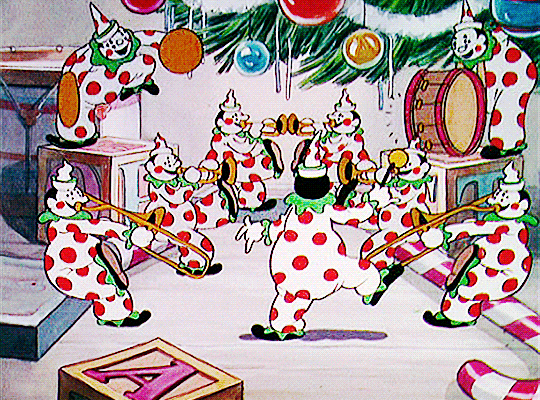
At The Christmas Ball: A Vintage Xmas Anthology
01 - At The Christmas Ball - Bessie Smith (1925)
02 - Santa Claus, Bring My Man Back To Me - Ozie Ware (1928)
03 - Papa Ain't No Santa Claus - Butterbeans & Susie (1930)
04 - It's Winter Again - Isham Jones & His Orchestra (1932)
05 - Jingle Bells - Benny Goodman & His Orchestra (1935)
06 - There's Frost On The Moon - Artie Shaw & His Strings (1936)
07 - I've Got My Love To Keep Me Warm - Mildred Bailey (1937)
08 - Christmas Morning The Rum Had Me Yawning - Lord Beginner (1939)
09 - Winter Weather - Fats Waller & His Rhythm (1941)
10 - Santa Claus Is Coming To Town - Bing Crosby & The Andrews Sisters (1943)
11 - Have Yourself A Merry Little Christmas - Judy Garland (1944)
12 - Let It Snow! Let It Snow! Let It Snow! - Connee Boswell (1945)
13 - Boogie Woogie Santa Claus - Mabel Scott (1948)
14 - Baby, It's Cold Outside - Pearl Bailey & Hot Lips Page (1949)
15 - All I Want For Christmas - Nat King Cole Trio (1949)
16 - What Are You Doing New Year's Eve? - The Orioles (1949)
17 - Midnight Sleighride - Sauter-Finegan Orchestra (1952)
18 - Silent Night - Dinah Washington (1953)
19 - White Christmas - The Drifters (1954)
20 - Rudolph The Red-Nosed Reindeer - The Cadillacs (1956)
21 - Warm December - Julie London (1956)
22 - Love Turns Winter To Spring - June Christy (1957)
23 - The Secret Of Christmas - Ella Fitzgerald (1959)
24 - The Christmas Song - Carmen McRae (1961)
25 - A Christmas Surprise - Lena Horne (1965)
26 - Santa Was Here - Lorez Alexandria (1968)
Download: flac / mp3
20 notes
·
View notes
Text













Vittore Frattini tra linea e luce
a cura di Domenico de Chirico
testi del curatore, di Anna Bernardini e di Alessandra Klimciuk
Grafiche Quirici srl, Barasso 2023, 76 pagine, 2,5X24,5, ISBN 9788894407389
euro 25,00
email if you want to buy [email protected]
Un viaggio “Tra linea e luce” per rendere omaggio al pittore Vittore Frattini. È questo il titolo scelto per l’esposizione personale dedicata all’artista nato nel 1937 a Varese, la città dove vive e lavora, in programma da venerdì 22 dicembre, fino a domenica 7 gennaio 2024 alla Fondazione Stelline di corso Magenta 61.
Tra linea e luce, a cura di Domenico de Chirico, presenta circa quaranta opere, una selezione significativa della produzione recente di Frattini e consentono di comprendere il suo percorso incominciato alla fine degli anni ‘50 sotto la guida del padre, lo scultore Angelo Frattini.
Nella sua lunghissima produzione artistica Frattini ha sperimentato diversi linguaggi e si è espresso utilizzando materiali eterogenei, pur mantenendo una lunghissima fedeltà a pochi elementi essenziali, e, soprattutto, alla vita di questo segno mosso e dinamico che, prendendo spunto dal “gesto” informale, viene purificato fino a realizzarsi come elemento generativo di forma e di spazio, indipendentemente dai materiali scelti.
07/03/24
#Vittore Frattini#art exhibition catalogue#Fondazione Stelline Milano 2023#Domenico de Chirico#art books#fashionbooksmilano
9 notes
·
View notes
Text

16 March 1937. First flight of the Fokker G.I. Dutch heavy fighter powered by two 650 hp Hispano-Suiza 14AB-02/03 engines. Flew from Welschap Airfield, Eindhoven with pilot Karel Mares. Comparable in size and role to the German Messerschmitt Bf 110 and the British Mosquito.
@ron_eisele via X


7 notes
·
View notes
Text

The forgotten queen
This is Charlie in her engine form. I have some history with the real life Charlie so I decided that her story is worth telling. She’s 03 2295-8 a German express engine. Rn she’s stuck in a roundhouse, but in my AU thanks to a certain green tender engine she returns to the rails. The following is an excerpt from my lore book I’m working on.
Charlie or 03 2295-8
Charlie or more accurately Charlotte is an express engine. Her class was designed to be a lighter version of the 01s for the Northern and Eastern parts of Germany’s rail network at the time because in those areas the track couldn’t support the bigger 01s. The 03s were viewed mixed by crews and are seen as the little sisters of the 01s. So many 03s are rather feisty individuals Charlie being a prime example of that. She’s also really mischievous and crafty although in year early years she landed herself inside a bakery because she wanted cookies. She ended up in East Germany after the war living mostly in the Leipzig area. One time while in Halle she met Heinrich who was dozing in his berth when suddenly a worker stumbled over a bucket scaring the big green engine. Charlie couldn’t contain her laughter but calmed the still shook Heinrich and promised to not tell anyone. Which was odd for her at the time because she loved spreading gossip and embarrassing stories all over the GDR. Also while with DR she adopted the nickname Charlie as her preferred name and also was modified into her current 03.2 or Reko 03 shape. But a few years later she was withdrawn and brought to Meiningen and turned into a generator to heat office buildings. But shortly before she had befriended a diesel engine called Oleksandra which promised to look out for Heinrich for her. For 12 long years she stood there, stripped of most of her parts out in the open with no future until in 1992 she was discovered by West German railway enthusiasts. They purchased her and got her restored into her former glory. This was made possible by finding parts of a scrapped 03 in a Polish scrapyard. For a couple of years Charlie hauled enthusiast’s trains and after her boiler certification ran out she came to Augsburg as a static display piece. She’s in running condition but there’s no concept to market her runs in addition to the trouble with a board in France. She resents that fact to no end. She wants to roam the rails once more. But what she doesn’t know that there might arise an opportunity for her. Charlie rolled out of Borsig works on the 13th of December 1937.
#ttte oc#ttte#lore#lore dump#Charlie the onyx engine#german railway#DDR engine#Charlie my precious engine I love her so much I have and H0 scale model of her
16 notes
·
View notes
Text













The Hermès Scarf
History & Mystique
Nadine Coleno
Thames & Hudson, London 2009, 296 pages, 25,5x25,5cm, ISBN 978-0-500-51518-1
euro 75,00
email if you want to buy [email protected]
The Hermès scarf is a style icon. Worn by royalty and celebrities, coveted and admired, and now avidly collected, this deceptively simple square of silk is much more than just a fashion accessory: it is the stuff of legend.
Since the first scarf made its debut in 1937, the House of Hermès has produced more than two thousand different designs. This book explores this lavish history through a sumptuous selection of scarves chosen from seven decades of creative innovation. From the classic designs that embody the Hermès tradition to the wildly imaginative stylings of contemporary designers, the House is always forging new pathways and yet is never afraid to take a fresh and often witty approach to its own heritage.
A scarf is never the work of a single individual; at every stage of its creation, talent and craftsmanship combine to create a handfinished work of art. These qualities shine through in the sumptuous illustrations, by turns playful and poetic, which lead the reader into a richly coloured world packed with a multitude of motifs. they range from the equestrian themes that are internationally associated with the Hermès brand, through French history and the natural world to global cultures.
From vibrant opulence to subtle harmony, every scarf conveys a mood and every one tells a story. Those stories are now brought together in a book that will delight longtime aficionados and win a host of new admirers for this symbol of timeless elegance.
03/07/24
3 notes
·
View notes
Text
PM Rishi Sunak Pushes for Sussexes to be Stripped of Titles and Changes to the Regency Act Amid Monarchy Threat. Changes to the Regency Act then Raised in the House of Lords in October 2022. by u/Quiet-Vanilla-7117
PM Rishi Sunak Pushes for Sussexes to be Stripped of Titles and Changes to the Regency Act Amid Monarchy Threat. Changes to the Regency Act then Raised in the House of Lords in October, 2022.
"Viscount Stansgate brought up the question in Monday’s session, asking “what plans [His Majesty’s Government] have, if any, to amend the Regency Act 1937.” "The Lord Privy Seal, The Lord True, replied that the Government will consider “their legislative programme for the remainder of the session,” without opening the topic up to further discussion.""Viscount Stansgate pressed on, noting that the Regency Act 1937 “is the only reason why it was possible to open the current Session of this Parliament.” Viscount Stansgate continued, asking if the Regency Act 1937 should not be amended, particularly Clause 6—which regulates Counsellors of States—because,“Otherwise, are the Government happy to continue with a situation where the counsels of state and regency powers may be exercised by the Duke of York or the Duke of Sussex, one of whom has left public life and the other of whom has left the country? Is it not time for the Government to approach the King to see whether a sensible amendment can be made to this Act?” It is the most political rebuke of the Regency Act and the fact that both the Duke of Sussex and the Duke of York continue to be Counsellors of State despite neither carrying out official duties—and in Prince Harry’s case, no longer domiciled in the UK.Princess Beatrice, likewise, does not carry out official duties, but only became a Counsellor of State upon her uncle’s accession.Lord True replied that he would not discuss any private conversations he has had with King Charles III or the Royal Household over the matter, but noted that “the Government will always consider what arrangements are needed to ensure resilience in our constitutional arrangements, and in the past we have seen that the point of accession has proved a useful opportunity to consider the arrangements in place.”Dominic Hubbard, 6th Baron Addington, then asked if the Government would “indicate that they will at least consider that the person they go to in the first consideration will be somebody who actually undertakes royal duties, or at least some part of them, at present?” Lord True again replied that he would not commit to an answer as any changes would have to be taken in consultation with the Royal Household.Changes to the Regency Act 1937 have been a talking point in recent years with many calling for the role to be amended to working royals only, removing Princes Harry and Andrew and Princess Beatrice.Article on PM's push:- https://ift.tt/aGqA1rj in the House of Lords:- https://royalcentral.co.uk/uk/changes-to-regency-act-raised-in-house-of-lords-182751/
post link: https://ift.tt/BlDJeIU
author: Quiet-Vanilla-7117
submitted: November 05, 2023 at 03:20AM via SaintMeghanMarkle on Reddit
#SaintMeghanMarkle#harry and meghan#meghan markle#prince harry#voetsek meghan#sussexes#markled#archewell#megxit#duke and duchess of sussex#duchess of sussex#duchess meghan#duke of sussex#harry and meghan smollett#walmart wallis#harkles#megain#spare by prince harry#fucking grifters#meghan and harry#Heart Of Invictus#Invictus Games#finding freedom#doria ragland#WAAAGH#Quiet-Vanilla-7117
8 notes
·
View notes
Photo

A woman at rest. [Murrells Inlet, South Carolina], ca. 1937. Photo by Bayard Wootten. The heightened tonal contrast makes the image come alive.
https://library.unc.edu/2018/03/iconic-photos-of-the-south-made-new-through-digitization/
30 notes
·
View notes
Text

Vitina Marcus (Brooklyn, New York, 1/03/1937).
13 notes
·
View notes
Text
José Mongrell Torrent 03/08/1870-05/11/1937 pintor costumbrista valenciano
(Valencia, 3 de agosto de 1870-Barcelona, 5 de noviembre de 1937) fue un pintor español.

Estudió en la Escuela de Bellas Artes de San Carlos de Valencia, donde fue discípulo de Ignacio Pinazo y de Joaquín Sorolla. Su participación en diversos concursos y exposiciones en Madrid y Barcelona, le supuso cierto renombre entre los círculos artísticos. Hizo el cartel de toros para la Feria de San Jaime de Valencia el año 1897, con gran éxito.
Obtuvo una plaza de profesor para la Escuela de Bellas Artes de San Jorge de Barcelona, donde residió el resto de su vida. Al frontal del Salón de San Jorge del Palacio de la Generalidad de Cataluña realizó una obra de grandes dimensiones, por encargo del presidente de la Diputación de Barcelona, el conde del Montseny, representando la Virgen de Montserrat con santos y reyes rindiéndole culto.
Realizó una pintura de género, el retrato y los temas costumbristas de ambiente valenciano, muy en la línea de Sorolla, donde se perciben reminiscéncias del arte del siglo XIX y un cierto estatismo en las figuras. Hay obra suya en el Museo nacional de Cerámica y de las Artes Suntuarias "González Martí" y en el San Pio V, ambos en Valencia, y en el Museo de Bellas Artes de Asturias.
0 notes
Text

Denis Roche [*]
da: https://losgrandesfotografos.blogspot.com/2019/03/denis-roche-1937-2015.html
27 notes
·
View notes
Photo
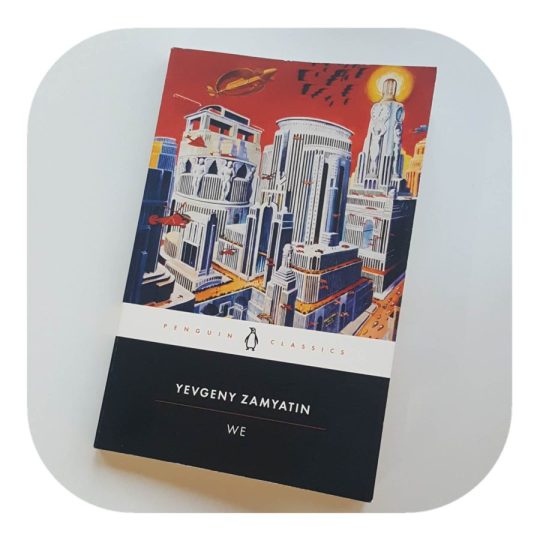
‘We’ by Yevgeny Zamyatin
Yevgeny Zamyatin was a Russian author born in February 1884. He studied engineering for the Imperial Russian Navy, lost his faith in Christianity, became an Atheist and a Marxist, and joined the Bolshevik faction of the Russian Social Democratic Labour Party. Zamyatin used literature to satirize and criticise the Soviet Union for its enforced conformity and totalitarianism.
‘We’ is his most famous novel and was the first work banned by the Soviet censorship board, Zamyatin smuggled ‘We’ to the West for publication. After being blacklisted, Zamyatin left his homeland and died in poverty in Paris in 1937. ‘We’ apparently inspired Aldous Huxley’s Brave New World, Ayn Rand’s Anthem, George Orwell’s Nineteen Eighty-Four, Kurt Vonnegut’s Player Piano, and Ursula K. Le Guin’s The Dispossessed. ‘We’ received a Prometheus Award in 1994.
I have to admit, I read George Orwell’s Nineteen Eighty-Four a few years ago but I haven’t read any of the other works inspired by Zamyatin’s ‘We’. I have copies of Huxley’s Brave New World and Kurt Vonnegut’s Player Piano waiting for me to pick them up, along with a dozen or so other books I’ve been meaning to read. After finishing ‘We’ a couple of days ago, I could definitely see the similarities to George Orwell’s Nineteen Eighty-Four, even down to the individual characters and the decisions they make. The endings of both novels share similarities, although I found Nineteen Eighty-Four’s ending more disturbing.
I’ll try to avoid giving away too many spoilers, but to summarise ‘We’, I found the novel strange, confusing and a bit difficult to follow at times. Though one could argue that the novel starts off rigid, precise and logical, and then descends into chaos and spontaneity as the story progresses, mimicking how the main character’s thoughts and emotions change. ‘We’ is set in a police-state called OneState, ruled by a mysterious figure known as The Benefactor, in a glass city cut off from the wild, outside world; ‘the unalterably straight streets, the sparkling glass of the sidewalks, the divine parallelepipeds of the transparent dwellings…’ The characters can see everyone and everything that is going on with the exception of when the blinds are lowered during the ‘personal hours’. The characters live according to ‘The Table of Hours’ where every hour is mapped out with certain activities that everyone must adhere to, except for the personal hours (16:00 to 17:00 and 21:00 to 22:00). During the novel the main character gladly believes and states that ‘one day all 86,400 seconds will be on The Table of Hours’. Everything from making machines, to creating music and poetry has been worked out with specific formulas, anything which deviates from these formulas is seen as a crime against OneState and the Benefactor.
The citizens of OneState believe and celebrate order, precision and numbers. Certain emotions like ‘Love’ are seen as primitive feelings belonging to distant ancestors and not to the citizens of OneState. ‘OneState mounted an attack on that other ruler of the world, Love. Finally this element was also conquered, i.e., organized, mathematicised…’ Individuality and imagination are also supressed by OneState, the main character states when referring to their ancestors, ‘They could only create by whipping themselves up to attacks of ‘inspiration’ some unknown form of epilepsy’. The citizens ridicule and laugh at reproduced performances from the world before OneState, as it is seen as chaotic, unorganised and distasteful. The control and strict order over their lives is seen as beautiful and the ideal state of happiness.
The novel is written in chapters titled ‘Records’ as the main character records his thoughts and observations about OneState that he hopes will be on ‘the INTEGRAL’, a rocket that will be sent into space carrying OneState’s ideals and principles to other planets. ‘The unknown beings who inhabit other planets – still living, it may be, in the primitive state known as freedom.’ The citizens of OneState believe they are more evolved and superior to their ancestors who had freedom, ideas, and unorganised lives. During the novel the main character is forced to question the ideals of OneState and feels emotions which he concludes must mean he has a soul. He finds himself turning away from order and ‘The Table of Hours’ and doesn’t want to go back to the life he had before, but knows he could be killed for having such thoughts and feelings. However, when OneState come up with a solution to rid its citizen’s of the burden of a soul, the main character avoids it for as long as he can.
‘We’ is an interesting novel and definitely worth reading if you have already read Orwell’s Nineteen Eighty-Four and intend to read the other novels inspired by ‘We’. The novel shows what a society might look like if every moment of our lives were controlled and ordered with little personal space or privacy. It also highlights the view of apparent happiness when compared to control and freedom. The spontaneity of human emotion and how it can’t be controlled without physically altering the human brain and the unnatural behaviour of those without emotions, no matter how painful those emotions may be. The novel gives an insight into the human psyche and what it means to be human, the good and the bad.
21 notes
·
View notes
Text
Polizia segreta istituita dal governo zarista nel 1881, fu la Ochrana a commissionare i “Protocolli dei Savi di Sion”, un presunto piano per la conquista del pianeta che sarebbe stato elaborato al primo Congresso sionista di Basilea del 1897, in realtà fabbricato rielaborando vari materiali (da Sergej Aleksandrovič Nilus, autore di vari testi di devozione ortodossa) .
(...) Pubblicati per la prima volta nel 1903, furono dichiarati fasulli da un tribunale svizzero trent’anni dopo. Ma tuttora sono molto diffusi e presi sul serio a livello ufficiale in vari paesi islamici (...). E girano anche in vari ambienti (anti) occidentali (...). Da noi sono stati conosciuti soprattutto a partire da una edizione del 1937, con una singolare introduzione di Julius Evola, secondo cui sarebbero stati falsi nella forma ma veri nella sostanza (...).
119 anni dopo, (d)all’Ochrana (...) (alla) Cheka, Gpu, Nkvd, Kgb, Fsb. (C)ome ad esempio è stato il tedesco ad aver dato al mondo la parola blitz, lo spagnolo golpe, l’inglese intelligence, il portoghese per mediazione boera commando o l’italiano fascismo, dal russo abbiamo preso la parola disinformatija (...).
La storia che l’Aids lo avevano fabbricato gli americani fu passata dal Kgb al giornale indiano filo-sovietico Patriot, che lo pubblicò la prima volta nel 1983. Ma venne sostanzialmente ignorata fino a quando, nell’ottobre del 1985, non fu rilanciata dalla Literaturnaya Gazeta, e poi potenziata da una relazione di Jacob Segal, un biofisico informatore della Stasi tedesco orientale. Non c’erano ancora internet e i social, ma bastarono giornali popolari inglesi (...) per diffonderla ai quattro venti. Nel 1987 (...) l’Urss ammise formalmente che era una balla, ma ormai nel Terzo Mondo aveva fatto ulteriore strada (...).
L’Urss nel 1992 cessò di esistere, e (...) nel 1996 venne istituita la Fsb. L’anno dopo esce “Osnovy geopolitiki: geopoliticheskoe budushchee Rossii”: “Fondamenti di geopolitica - Il futuro della Russia”. Adottato come libro di testo dall’Accademia militare russa, lo firma Aleksandr Dugin, un intellettuale misticheggiante e studioso del citato Julius Evola (...).
In qualche modo, la “quarta teoria politica” da Dugin teorizzata per “andare oltre le teorie politiche classiche della modernità” (...). “La quarta teoria politica è antiliberale, anticomunista e antifascista allo stesso tempo” (in realtà è solo ferocemente antiliberale e nazional-socialista, cioè sintesi statalista nazimao, ndr), e allo spirito dei Protocolli si richiama chiaramente (diluendo) l’antisemitismo in un più ampio antioccidentalismo. (...)
Oltre all’ideologia, però, in questo libro in particolare Dugin propone una strategia, che aggiorna il repertorio zarista e sovietico all’epoca della rete. (L'uso di) strumenti asimmetrici: disinformazione, sovversione, guerra politica. Un concetto tipicamente da Ventesimo secolo come quello di competizione asimmetrica, (...) è messo assieme alle idee del generale Valery Gerasimov su come condurre la guerra nel XXI secolo. Risultato: “Una pratica non lineare di competere con l’Occidente solo nelle aree in cui la Russia si trova in vantaggio”. E la prima di esse era quella dell’informazione, per via del sistema autoritario che mette la Russia relativamente al riparo dalle contromosse dell’altra parte.
Però da qui (il rischio di ) una escalation fuori controllo, su cui poi il Cremlino avrebbe avuto gravissimi problemi a tornare indietro (causando la dipendenza dalla Cina, ndr). E qua stiamo.
via https://www.ilfoglio.it/esteri/2022/03/19/news/l-antica-tradizione-russa-di-manipolare-le-informazioni-e-diffonderle-3823233/
Maurizio Stefanini datato e pur abbondantemente depurato dal tifo da stadio demogradigo (le curvesud so' opposte ma tutte uguali), cmq. utile per evidenziare gli evidenti, rozzi FLAWS concettuali del fronte che in occidente si dichiari anti occidentale, gettando il bambino assieme all'acqua sporca ("bei pirla", cit. Feltri).
[Per inciso, rassicuriamo Stefanini: la Russa ANELA a trovare una way out dal dispendioso e totalizzante casino alla Saddam Hussein in cui s'è cacciata, ma come tutto il resto, non dipende più dalla Russia, potenza oramai solo (macro-)regionale. Dipende dagli Usa: sarà sufficiente attendere la cacciata di Biden a fine anno e ci siamo.]
Testimonianza concreta di come un SANO COMPLOTTISMO, quello anti autoritario anti derive culturali anti degrado, debba porre dubbi e metter sotto al microscopio TUTTI i tentativi di manipolazione collettiva collettivista. La stella polare: sospettare quando si sente puzza di autoritarismo statalista, di ogni specie: sia Deep State Dem. che satrapia orientale.
4 notes
·
View notes
Text
Il Velo

Vergine velata, 1850 (Presentation Convent, St. John’s, Canada) | Giovanni Strazza (1818-1875, Italia)

Sally Fairchild with blue veil, 1890 | John Singer Sargent (1865-1925, USA)

The blue veil, 1898 | Edmund Tarbell (1862-1938, USA)
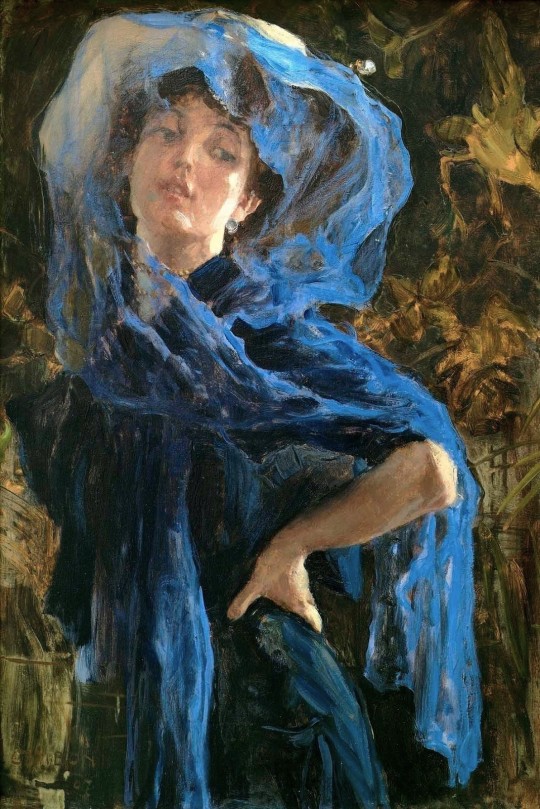
Il velo azzurro (the blue veil), 1907 | Glauco Cambon (1875-1930, Italia)

Fashionable lady with feathered hat, early 20th-century | Axel Wallert (1890-1962, Sweden)

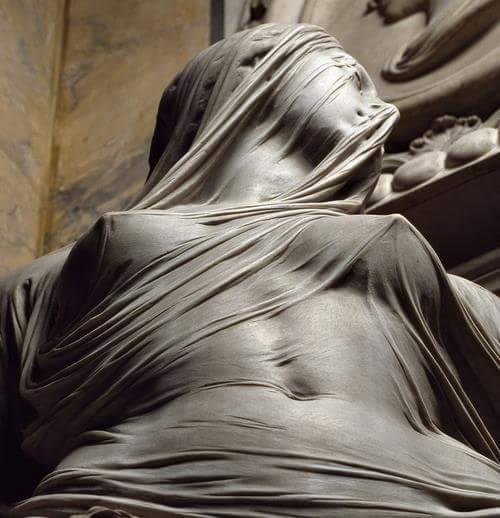
La Modestia, 1751 (Cappella Sansevero, Napoli) | Antonio Corradini (1688-1752, Italia)
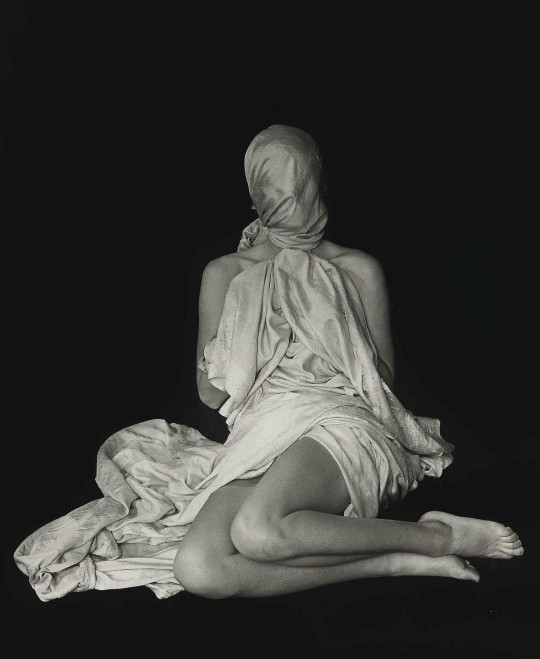
La pudeur (modesty), 1937 ca. | ph., Erwin Blumenfeld (1897-1969, Germany-USA)

Boreas, 1902-03 | John William Waterhouse (1849-1917, England)
2 notes
·
View notes